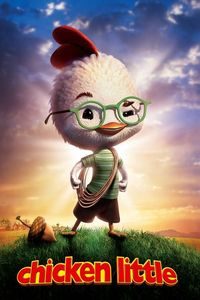Bantam Spectra, 2002, 191 pages, C$22.95 tpb, ISBN 0-553-37796-5
Few Science Fiction universe are as entertaining as David Brin’s “Uplift” series. On one level, it’s a standard galactic-civilizations setting, with plenty of alien races, big ideas, neat gadgets and an inspiring niche for humanity. It’s space opera at its finest, without much relevance to the future as it could be, but compulsively delightful for five of the six books in the series. (I still doze off at the memory of Brightness Reef). Brin is a natural storyteller: his mixture of humour, action and against-all-odds bravado is the stuff of classic SF adventures.
The one bit of background innovation that makes it different from other series is a twist on environmentalist concerns: The galaxy out there, we finally discover once we start poking around the stars, is one big potpourri of related species. An essential part of the series is “Uplift”, the lengthy process by which one species brings another to sentience and full-fledged galactic participation. Every species has been uplifted by another… except, curiously enough, humans. In the series, humans have managed to uplift a number of species (dolphins and chimps, at first) while seemingly being patron-less. You can imagine how well the aliens are taking the news, and which kind of upset this causes in well-mannered galactic society.
Contacting Aliens is, to steal the sub-title, “an illustrated guide to David Brin’s Uplift Universe”, designed as if it was a manual distributed to future agent of humanity as they travel across the galaxy. Galactic history and institutions are sketched, followed by a lengthy bestiary of alien species. Most of those description are accompanied with amusing ink drawings from Kevin Lenagh. The guide is roughly arranged in galactic “family lines”, which prove more related than at first glance. As befitting its billing as a “field guide”, the descriptions are written as coming from Earth’s intelligence agencies, with plenty of tantalizing details, vague suppositions and unanswered questions that agents may want to pursue.
Fans of Brin’s universe will be thrilled at the wealth of details contained in Contacting Aliens. The Uplift universe is vast, dangerous and fun: If this book does one thing very well, it’s to keep up in the same amusing vein as the novels, balancing Brin’s optimistic humour with a thrilling setting that could still launch a series of adventures. (In fact, the book contains two mini-pieces of fiction that raise even more questions about the nature of the Uplift universe.)
While the cover sports a spiffy colour illustration by Jim Burns, the guide itself is illustrated by Kevin Lenagh’s simpler black-and-white ink drawings. While Lenagh does an excellent job at portraying Brin’s wilder inventions, the artwork can often err on the rushed and silly end of things. Some of the human figures are unconvincing and the poses often feel unnatural. But I’m being too harsh, perhaps in comparison with Burns’ work: The guide would be much poorer without Lenagh’s artwork, and the sense of fun from Brin’s writing comes across clearly in the illustrations.
If you’re not already a fan of Brin’s series, Contacting Aliens won’t be as interesting as it should be. Gamers used to reading role-playing source-books will find much familiar ground here (indeed, the book ends on a mention of the Uplift GURPS supplement), but the audience is definitely those readers looking for a little bit more Uplift material after the conclusion of 1998’s Heaven’s Reach. It shows the way to more stories in the Uplift universe and it’s certainly a treat for fans.
[January 2006: Via email, Kevin Lenagh adds that he contributed a substantial amount of text in addition to the illustration. He also clarifies that the book suffered from a number of unfortunate production issues, making the end result somewhat less impressive that he had hoped for. Have a look at lenaghalienfactory.com for better examples of his art, including color versions of some illustrations in Contacting Aliens.]
